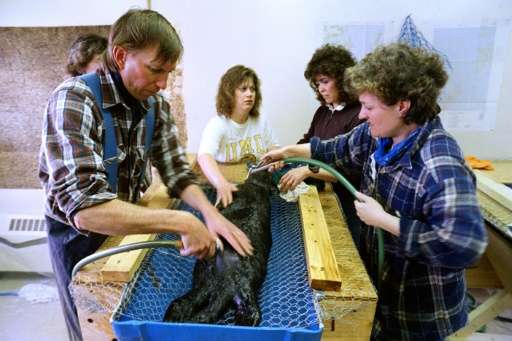US: Alaska wildlife recovered since 1989 Exxon disaster

Key wildlife populations like otters that were devastated in the 1989 Exxon Valdez oil spill in Alaska have fully recovered, the US Justice Department said Thursday.
With especially sea otters and harlequin duck now recovered "to pre-spill population levels," the department said it had no grounds to exact more damages from the oil giant, now called ExxonMobil.
"Scientists have concluded that exposure to the subsurface oil is no longer biologically significant to these species," the department said in a statement.
"Accordingly, the governments have decided to withdraw their 2006 request to Exxon to fund bio-restoration of subsurface lingering oil patches," it said, referring to the federal and Alaska state authorities.
Exxon's huge tanker ran aground in Prince William Sound in March 1989, spilling nearly 11 million gallons (42 million liters) of crude oil from Alaska's North Slope fields into the waters, affecting 1,500 miles (2,400 kilometers) of coastline that included several national parks and wildlife refuges.
At the time it was the world's largest oil spill, eclipsed in 2010 by BP's Deepwater Horizon spill in the Gulf of Mexico.
Exxon was forced to pay billions of dollars in fines and cleanup costs. But in 2006 the Justice Department reserved the right to further fine the company if the habitat for the two species was not fully restored and their populations still injured by the spill's effects.
"Our action today allows us to celebrate all that has been accomplished in Prince William Sound since the spill," said John Cruden, Justice Department assistant attorney general.
Officials said their still remains significant signs of the oil under the soil and in rocks in the area.
"Although the lingering oil is largely in subsurface soil or rocks, it does have the potential, if disturbed, to expose intertidal resources to oil, and its presence can be disturbing to people who come across it," said Lois Schiffer of the National Oceanic and Atmospheric Administration.
"The real question is whether it is better to intervene or to leave it to break down over time."
© 2015 AFP
















